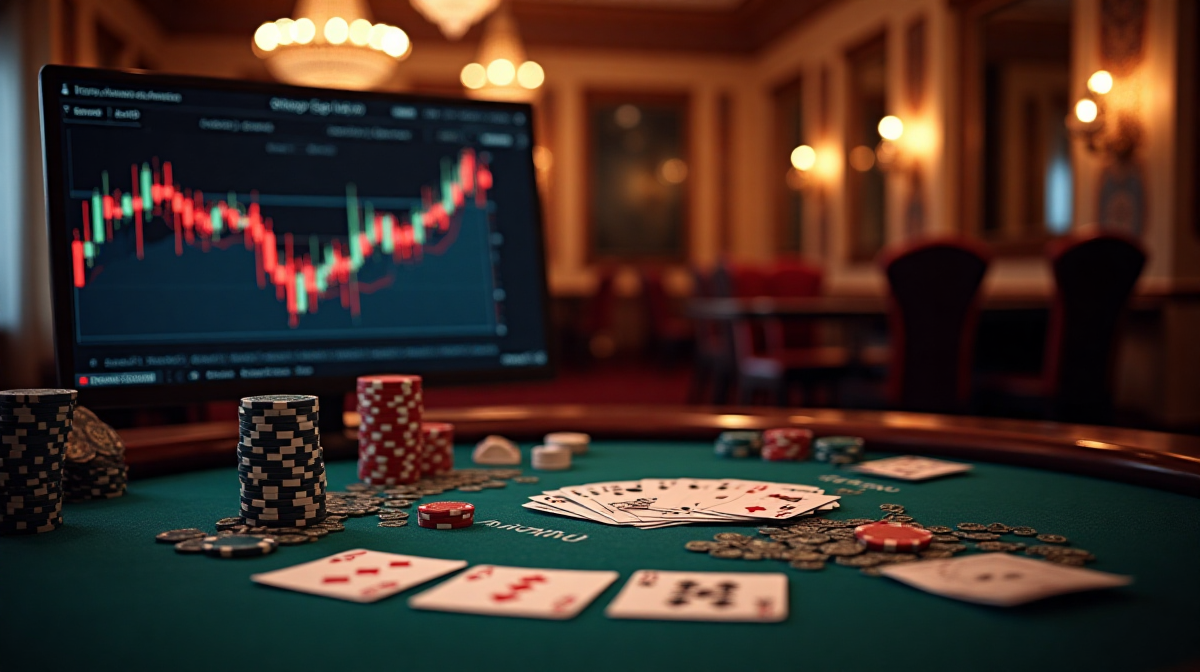Poker Face: Read Your Opponents Like a Pro
Introduction: The Art of Reading Opponents
What is Reading in Poker? – Beyond Tells
Reading opponents in poker extends far beyond simply spotting “tells” – those stereotypical physical or behavioral cues. It’s about constructing a comprehensive understanding of their hand, tendencies, and thought processes. It's about using all available information, from bet sizing to timing, to build a probabilistic assessment of their likely holdings. Many players are now seeking information online, even searching for terms like sky bet fixed matches today, hoping for an edge. However, true skill lies in independent analysis.
Why is Reading Opponents Crucial to Success?
Success in poker isn't solely based on the strength of your cards; it’s about maximizing value when you’re ahead and minimizing losses when you’re behind. Accurate reads allow you to make more informed decisions, extracting maximum value from your strong hands and avoiding costly mistakes with weaker ones. It’s the difference between a lucky win and consistent profitability. Even navigating platforms like sky bet login my account requires understanding your own risk tolerance, something informed by understanding the players you face.
The Evolution of Tells - From Physical to Online
Traditionally, poker tells focused on physical cues – a shaky hand, a quick glance at chips, or a dilated pupil. However, the rise of online poker has shifted the focus to digital tells. These include bet timing, bet sizing patterns, and even chat box behavior. The core principle remains the same: identifying deviations from a player’s normal behavior that indicate the strength or weakness of their hand.
Understanding Poker Tells: Physical & Behavioral
Common Physical Tells & Their Meanings
While not foolproof, recognizing common physical tells can provide valuable insights.
Hand Movements & Bet Sizing Correlation
Players often subconsciously manipulate their chips or cards. A smooth, deliberate bet sizing can indicate confidence, while fumbling with chips might suggest uncertainty.
Eye Movements & Focus of Attention
Where a player looks can be revealing. Staring intently at the board often signifies a strong hand, while avoiding eye contact might suggest a bluff.
Breathing & Pulse Rate Indicators
Subtle changes in breathing rate and pulse can betray nervousness or excitement, offering clues about hand strength.
Posture & Body Language Clues
Leaning forward can indicate engagement and interest, while slouching might suggest disinterest or a weak hand.
Emotional Tells: Identifying Fear, Confidence & Weakness
Emotional states significantly influence behavior. Recognizing fear (hesitation, nervous ticks), confidence (relaxed posture, assertive betting), and weakness (avoidance of eye contact, fidgeting) is crucial.
Recognizing Forced Tells vs. Natural Reactions
Forced tells are consciously fabricated attempts to mislead opponents, while natural reactions are subconscious. Identifying the difference is key to avoiding deception.
The Importance of Baselines: Establishing Normal Behavior
Before attempting to read an opponent, establish a baseline of their typical behavior. This allows you to identify deviations that might indicate something significant.
Reading Opponents in Different Game Formats
Live Poker Tells: A Detailed Breakdown
Recognizing Tells in No-Limit Hold'em
No-Limit Hold'em offers the widest range of physical and behavioral tells, making it ideal for observant players. Pay attention to everything from bet sizing tells to subtle facial expressions.
Tells in Pot-Limit Omaha
PLO's more complex hand combinations can make tells less reliable, but patterns in betting and hand presentation can still be informative.
Online Poker Tells: What Can You Glean from Digital Data?
Timing Tells: Bet Sizes & Response Times
Quick bets often indicate strength, while delayed bets might suggest a calculated bluff. Analyzing response times to different board textures is also valuable. Many players use platforms such as sky bet for online poker, and understanding these digital tells is vital for success.
Statistical Analysis: HUDs & Interpreting Data
Heads-Up Displays (HUDs) provide valuable statistical data, such as VPIP (Voluntarily Put in Pot) and PFR (Preflop Raise). Interpreting this data can help you identify opponent tendencies.
Chat Box Behavior & Profile Analysis
Chat box behavior can reveal personality traits and emotional states. Profile analysis can provide insights into a player's win rate and playing style.
Tournament vs. Cash Game: Adapting Your Reading Strategy
Tournament dynamics, with increasing blinds and ICM considerations, require a different reading strategy than cash games. Players are often more risk-averse in tournaments, especially as the bubble approaches.

Advanced Reading Techniques: Beyond the Obvious
Leveling: Understanding How Opponents Think You Perceive Them
Leveling involves thinking about how your opponents perceive your reading of them. It's a complex mental game of anticipating their expectations.
Meta-Gaming: Recognizing Patterns in Opponent’s Reading Attempts
Meta-gaming is recognizing patterns in how your opponents attempt to read you and exploiting those patterns.
Exploiting Opponent Tendencies: From Tight to Loose Players
Identifying whether an opponent is tight (plays few hands) or loose (plays many hands) allows you to adjust your strategy accordingly.
Utilizing Bet Sizing for Information
Bet sizing can be used to extract information. Small bets can elicit a call from weaker hands, while large bets can force folds from weaker hands.

Common Mistakes to Avoid When Reading Opponents
Confirmation Bias: Letting Your Preconceptions Cloud Judgement
Avoid seeking out information that confirms your existing beliefs and be open to revising your assessments.
Overthinking & Seeing Tells That Aren’t There
Don't force interpretations. Sometimes a behavior is just a random occurrence. Remember the game of poker requires a poker face, and players try to mislead.
Neglecting Range & Board Texture
Always consider the range of hands your opponent could have and how the board texture affects those hands.
Assuming Consistency: Tells Change with Experience & Game Flow
Opponents adapt. Tells that were effective earlier in the session might become unreliable as they become more aware of your observations.
Practice & Refinement: Honing Your Reading Skills
Studying Hand Histories & Analyzing Opponent Behavior
Reviewing hand histories and analyzing opponent behavior is a valuable learning tool.
Table Selection: Choosing Games with Readable Opponents
Select games with opponents who exhibit clear tells and are less experienced.
Continuous Self-Assessment: Identifying Your Own Weaknesses
Be honest with yourself about your own reading abilities and identify areas for improvement.
The Role of Observation & Patience in Being a Successful Reader
Reading opponents requires focused observation and patience. Don't rush to conclusions.
Conclusion: Mastering the Art of Reading – A Continuous Journey
The Ethical Considerations of Reading Opponents
Reading opponents is a legitimate part of the game, but avoid crossing ethical boundaries, such as colluding with other players. Even when utilizing sky bet for practice, maintain fair play.
Reading as a Complement to Fundamental Poker Strategy
Reading opponents should complement, not replace, fundamental poker strategy. Solid fundamentals are essential for long-term success. Remembering 4 letter words from poker like flop and turn is a good starting point, but understanding their context is key.
Resources for Further Learning & Improvement
Numerous resources are available to help you improve your reading skills, including books, online courses, and poker training websites.

